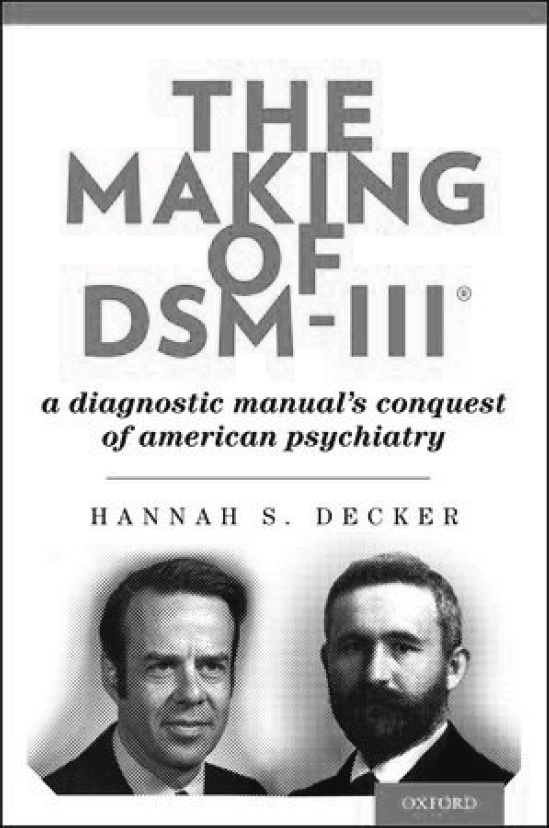
This book describes the history of the most important edition of the American Psychiatric Association's diagnostic manual: DSM-III, which came out in 1980, was a truly revolutionary document. Decker puts this story in a wider historical context. American psychiatry faced criticism from many quarters, including colleagues from other specialties, and felt particularly vulnerable about the reliability of its diagnoses. Only a few academics, most of whom worked at Washington University in St Louis, had focused on these issues.
The main character in this book is Robert Spitzer, a Columbia University professor whose portrait is next to that of Emil Kraepelin on the cover of the book. Spitzer adopted the views of the St Louis group, namely that in the absence of biomarkers, psychiatric diagnosis has to be made on the basis of systematic observation and phenomenology. Spitzer, a former psychoanalyst, had moved into psychometrics, but was also a brilliant politician. Often under attack, particularly from psychoanalysts, Spitzer almost always emerged victorious. The new system replaced prototypical descriptions (still to be found in the International Classification of Diseases) with algorithmic criteria that had the potential to make diagnosis more reliable. The DSM system was a convenient way of classifying disorders that were poorly understood (and remain so). It was never intended to be a treatment manual, although it has often been used that way, with clinicians conducting routine symptom checks instead of exploring life histories. As biological theories came to dominate the American system, that problem has not got any better.
Decker has gone to primary sources and interviewed key players to find out how decisions were actually made. What makes this book outstanding is its analysis of medical politics. We would like to believe that diagnostic manuals are based on empirical data. In psychiatry, this is not yet possible. Decker's book shows how outcomes often depend on which physicians are most influential and powerful.
This story is also highly relevant in view of the recent publication of DSM-5, which ignited a story of controversy that was also based on medical politics. While DSM-5 is not radically different from DSM-III, every change stirred up a storm of disagreement. It remains to be seen whether the upcoming ICD-11 system will produce similar levels of criticism. It also remains to be seen whether the research domain criteria proposed by the National Institute of Mental Health offer a viable alternative. It is likely that the diagnostic system cannot become more valid until research illuminates the true causes of mental disorders. In summary, this book tells a story that was relevant 35 years ago and remains relevant today.



eLetters
No eLetters have been published for this article.